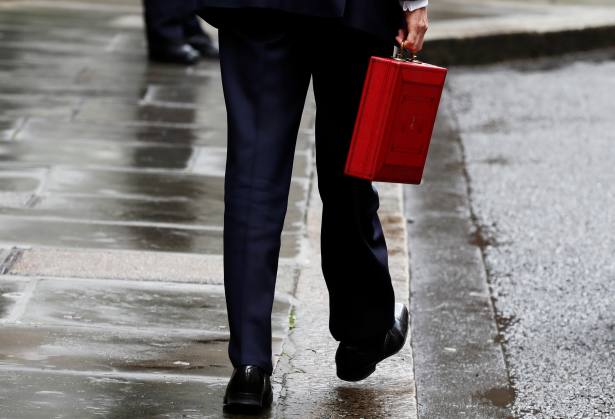Sterling perked up by a paltry 0.4 per cent against the US dollar, while the FTSE 100 fell slightly from 7456.95 at 1pm on 22 November, opening at 7381.05 on 23 November, although by mid-morning today (23 November), it had ticked up to 7400.
Mr Page adds: “For now the chancellor has managed to pull off a significant increase in spending without breaching his fiscal rules. Financial markets appear to have reserved judgement for now. The chancellor will hope this remains the case.”
Debt
The UK’s debt mountain does appear to be shrinking gradually, with the deficit continuing to fall; the OBR has forecast the structural deficit to be 1.3 per cent of GDP in 2020-21, giving the government £14.8bn of headroom against its 2 per cent target.
Debt is set to peak at 86.5 per cent of GDP this year, falling gradually to 79.1 per cent in 2022-23; “the first sustained decline in debt in 17 years”, Mr Hammond claimed.
This should perhaps offset fears over growth, which earlier this year saw ratings agency Moody’s knock the UK’s credit rating down again.
According to the OBR: “The public finances have performed better than expected. The ONS has revised borrowing in 2016-17 sharply lower, relative to its initial estimate and our March forecast.
“And the deficit has continued to fall in the first half of 2017-18. We have revised borrowing down by £8.4bn to £49.9bn for the full year, but this is still slightly up on 2016-17 because timing effects boosted receipts last year and will lower them later this year.”
The OBR said despite the deterioration in its underlying forecast, the government has “ensured net debt still falls fractionally as a share of GDP in 2018-19 and by more beyond”.
According to the OBR, the government has done this largely by:
1) Announcing fresh sales of RBS shares.
2) Passing regulations that ease local and central government control over housing associations in England.
This means the OBR has reduced its borrowing forecast by around £3.75bn a year and reduced the debt forecast by between £67bn and £81bn.
But all this gloom means there may be a stay of execution on higher interest rates, according to Alix Stewart, fund manager of fixed income at Schroders.
She says: “The OBR’s growth forecasts have been lowered by more than the market expected and the chancellor is being more prudent on the Budget deficit than he might have been.
“This is resulting in less likelihood that the Bank of England will raise interest rates much more (if at all). In addition, gilt issuance, while a little bit higher than expected from 2019 onwards, isn’t too much to worry about.”







